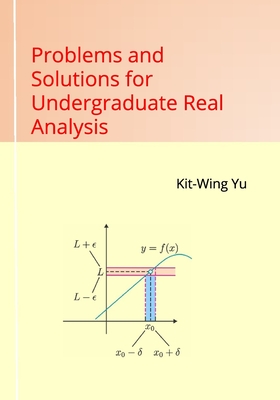Close this alert

Problems and Solutions for Undergraduate Real Analysis
Current price:
$38.00
This product is not returnable.
Publication Date: February 10th, 2020
Publisher:
978-988-74155-3-4
ISBN:
9789887415534
Pages:
414
Usually Ships in 1 to 5 Days
Description
The present book Problems and Solutions for Undergraduate Real Analysis is the combined volume of author's two books Problems and Solutions for Undergraduate Real Analysis I and Problems and Solutions for Undergraduate Real Analysis II. By offering 456 exercises with different levels of difficulty, this book gives a brief exposition of the foundations of first-year undergraduate real analysis. Furthermore, we believe that students and instructors may find that the book can also be served as a source for some advanced courses or as a reference.The wide variety of problems, which are of varying difficulty, include the following topics:
- Elementary Set Algebra
- The Real Number System
- Countable and Uncountable Sets
- Elementary Topology on Metric Spaces
- Sequences in Metric Spaces
- Series of Numbers
- Limits and Continuity of Functions
- Differentiation
- The Riemann-Stieltjes Integral
- Sequences and Series of Functions
- Improper Integrals
- Lebesgue Measure
- Lebesgue Measurable Functions
- Lebesgue Integration
- Differential Calculus of Functions of Several Variables
- Integral Calculus of Functions of Several Variables
Furthermore, the main features of this book are listed as follows:
- The book contains 456 problems of undergraduate real analysis, which cover the topics mentioned above, with detailed and complete solutions. In fact, the solutions show every detail, every step and every theorem that I applied.
- Each chapter starts with a brief and concise note of introducing the notations, terminologies, basic mathematical concepts or important/famous/frequently used theorems (without proofs) relevant to the topic. As a consequence, students can use these notes as a quick review before midterms or examinations.
- Three levels of difficulty have been assigned to problems so that you can sharpen your mathematics step-by-step.
- Different colors are used frequently in order to highlight or explain problems, examples, remarks, main points/formulas involved, or show the steps of manipulation in some complicated proofs. (ebook only)
- An appendix about mathematical logic is included. It tells students what concepts of logic (e.g. techniques of proofs) are necessary in advanced mathematics.
